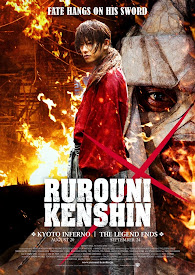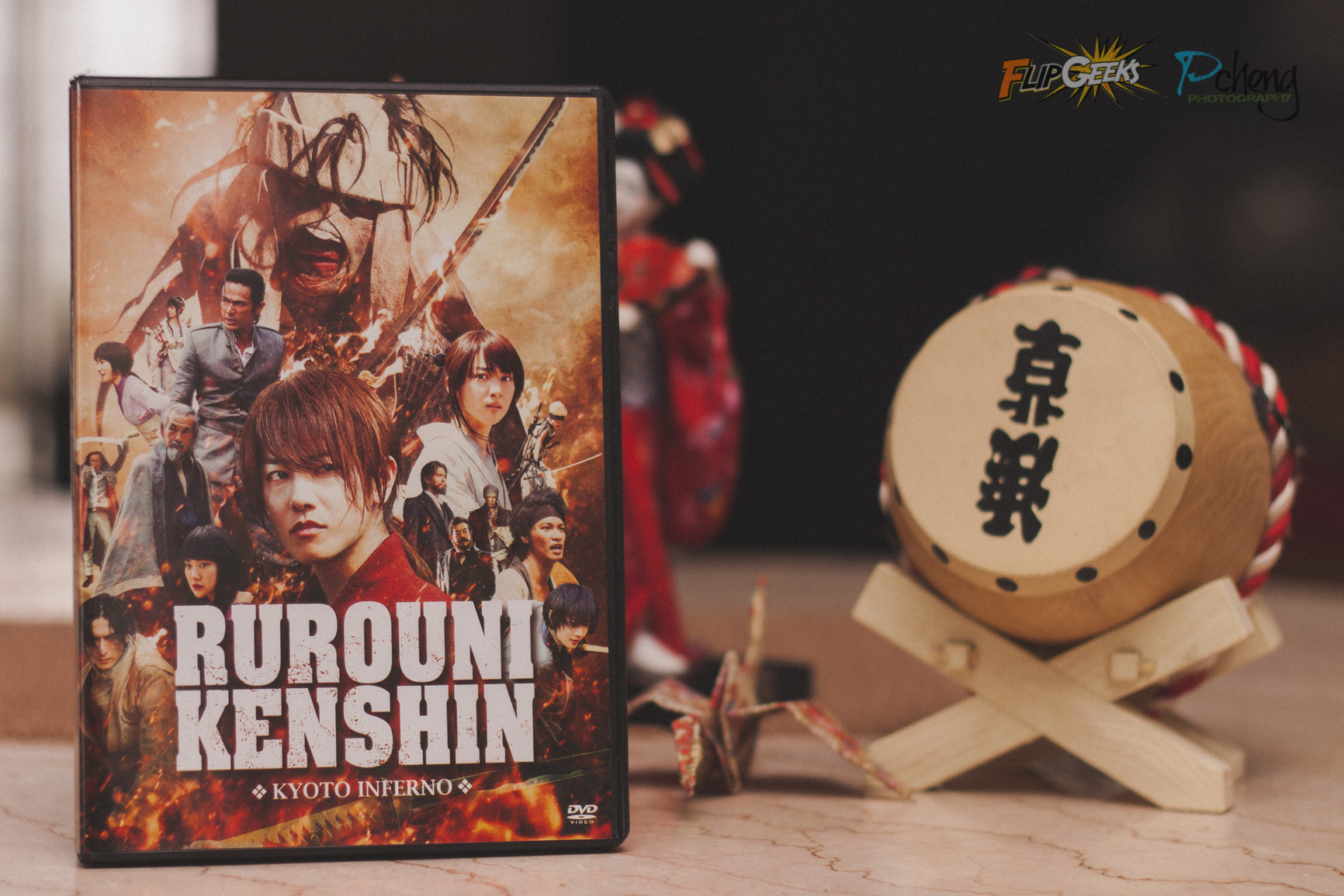
- #Watch rurouni kenshin kyoto inferno onlin e full
- #Watch rurouni kenshin kyoto inferno onlin e series
Aside from some character development gripes, the assuredness of direction, cinematography, pacing, acting-chops, choreography and perhaps most importantly, appreciation for the source material, it's lessons and essence, this is easily one of the best, ( if not the best) in contemporary Japanese action cinema.

Once again I applaud Satoh Takeru, Tatsuya Fujiwara, Kenji Tanigaki and the rest for the unbelievable devotion to realizing these dynamic characters as authentically as possible. This film contains-easily one of the greatest third acts I've ever seen, and any martial arts/action film buff worth their salt needs to see this film. There are a variety of positives and negatives in each viewing order, but overall, each of them provides a different perspective and experience.A reflective first act may prove to be too slow for some viewers, but these moments contain the most imperative lessons for Kenshin in the entire trilogy. However, we still suggest you try the other mixes as well. It highlights why the film franchise is so well-loved. It weaves the story together the best, in our opinion. Our top Rurouni Kenshin sequence pick is…
#Watch rurouni kenshin kyoto inferno onlin e series
Ending the series with The Final provides a more cohesive and satisfying ending to the series. It makes him seem a better villain and adds a stronger emotional background to the narrative. While The Final itself explains the reason for this conflict, The Beginning contextualises Enishi’s motives better despite the significant differences in the films’ timeframes. Through this viewing order, we’ll get a better understanding of why The Final’s villain, Enishi Yukishiro, hates Kenshin so much. By swapping the two, it changes this experience a bit but not significantly. Watching The Final before The Beginning may feel less emotionally gripping.Ī post shared by 映画『るろうに剣心』公式 the only downside to watching the films in their original sequence is the lessened impact of seeing the events in The Final before The Beginning. Without spoiling anything, The Final is a revenge story that takes root from The Beginning’s events. The only downside of this viewing order is how weak it makes The Final feel.
#Watch rurouni kenshin kyoto inferno onlin e full
Ending the series with The Beginning, which serves as the series’ prequel, makes the franchise come full circle. This sequence reinforces Kenshin’s changed nature and strong will to protect his vow to never kill again. We see him put to the edge over and over, with enemies from both his past and present forcing him to unleash his full potential as the former Battousai.

However, through this viewing order, we see how the consequences of Kenshin’s past unravels tragically yet beautifully onscreen. With his gentle nature and kind expressions, it’s hard to identify him as the manslayer the legend poses him to be. By following this order, you get introduced to Kenshin Himura as a mysterious stranger with an obscure past. The films in the series were released as follows: Rurouni Kenshin Origins (2012), Rurouni Kenshin: Kyoto Inferno (2014), Rurouni Kenshin: The Legend Ends (2014), Rurouni Kenshin: The Final (2021), and Rurouni Kenshin: The Beginning (2021).Ī post shared by 映画『るろうに剣心』公式 with the most basic, there’s the original release date sequence. Trying to get over his past, he vows never to kill again by only carrying a sword with a reverse-blade edge. His most recognisable feature is the cross-shaped scar on his cheek, which earned the series its alternate title outside Japan, Samurai X. Set in the beginning of the Meiji era (1868 to 1912), it focuses on the story of Kenshin Himura, a rurouni (wanderer) who was formerly known as a legendary assassin called Hitokiri Battousai (sword-wielding manslayer).

The anime, on the other hand, aired in 1996 to 1998, with one film and a couple of original videos (OVAs) released in 1999, 2001, and 2011.

But first: what’s the hype around Rurouni Kenshin?īefore we get to it, here’s a quick primer about the Rurouni Kenshin films: the original manga source material was published in Japan from 1994 to 1999, with newer volumes released up to the present.


 0 kommentar(er)
0 kommentar(er)
